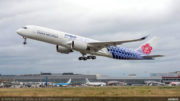Kennedy Space Center, Florida/ 26 August 2021
With the next supply flight to the International Space Station (ISS), the Space Hub of the University of Zurich (UZH) and Airbus Defence and Space are bringing an experiment into space, which is intended to further advance the industrial production of human tissue in zero-gravity conditions.
With this step, space could become a workshop for producing miniature human tissue for terrestrial use in research and medicine. Initial preparatory tests on the ISS 18 months ago were successful.
The process for the joint “3D Organoids in Space” project comes from Zurich scientists Oliver Ullrich and Cora Thiel, pioneers in research on how gravity influences human cells. Together with Airbus, they have developed the process to project maturity.
The Airbus Innovations team led by project manager Julian Raatschen is developing the hardware and providing access to the ISS. From the idea to the first production test in space it took the project partners only three years to complete various test phases and highly competitive internal selection procedures.
“We are the first to show that the path to production in space is feasible, not in theory, but in practice,” says Oliver Ullrich.
Improving drug development and reducing animal testing
Oliver Ullrich, professor of anatomy at UZH, biologist Cora Thiel and Airbus are using microgravity in space to grow three-dimensional organ-like tissues – so-called organoids – from human adult stem cells. “On Earth, three-dimensional organoids cannot be produced without supporting skeletons because of gravity,” Thiel explains.
Such 3D organoids are of great interest to pharmaceutical companies: Toxicological studies could thus be carried out directly on human tissue without the need for animal models.
Organoids grown from patient stem cells could also be used in the future as building blocks for tissue replacement therapy for damaged organs.
This is because the number of donated organs is far from sufficient to meet the worldwide demand for thousands of donor organs.
3D organoids grown in space
The research conducted in March 2020, when 250 test tubes containing human stem cells spent a month on the ISS, was very successful: differentiated organ-like liver, bone and cartilage structures had developed as intended from the tissue stem cells in microgravity at an altitude of 400 kilometres.
In contrast, the cultures created on Earth, which were grown as controls under normal gravity conditions, showed no or only minimal cell differentiation.
Robustness and viability
In the current mission, tissue stem cells from two women and two men of different ages are being sent into space. In doing so, the researchers are testing how robust the method is when using cells of different biological variability.
They expect production to be easier and more reliable in microgravity than using support structures to grow on Earth. “Currently, the focus is on production engineering issues and quality control.”
With regard to the envisaged commercialisation, we now have to find out how long and in what quality we can keep the organoids grown in space in culture after their return to Earth,” says Ullrich.
“If successful, the technology can be further developed and brought to operational maturity. Airbus and the UZH Space Hub can thus make a further contribution to improving the quality of life on Earth through space-based solutions,” says Airbus project manager Raatschen.
The sample material will return to Earth at the beginning of October. First results are expected from November.
About the “3D Organoids in Space” project
The joint project started in 2018. The teams from the UZH Space Hub and Airbus Defence and Space submitted their proposal to an Airbus internal innovation and ideas competition to obtain basic funding and start initial research work. There, the project successfully prevailed alongside 500 other ideas.
SOURCE : Airbus













Be the first to comment on "University of Zurich and Airbus grow miniature human tissue on the International Space Station ISS"